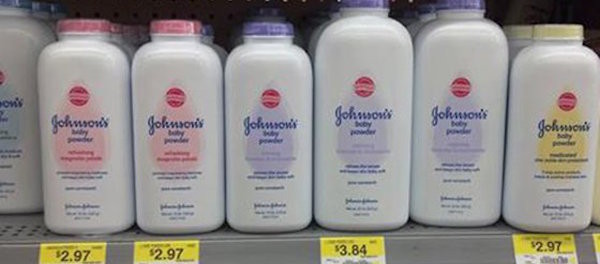10,000 Women Develop Cancer Because of Johnson & Johnson Baby Powder

The baby powder is usually found in every household, even when there is no baby. Most women use the talc-based powder because it makes the skin younger looking and soft. If you are one of them, you need to stop that. Baby powder, like that one from Johnson and Johnson, is increasing the risk by 33% of women of being diagnosed with ovarian cancer. The epidemiologist Dr. Daniel Cramer thinks that minimum 10,000 women get ovarian cancer because they use this baby powder every day.
The shocking facts
The studies provided in 1982 have shown a connection between the baby powder and ovarian cancer. Discoveries have shown that women who use talc-based powders are 300 times more likely to develop ovarian cancer. This study hit general media by the New York Times and forced the company Johnson and Johnson to unveil the truth behind their powder.
Read the labels
If you have a baby powder in your house, get it and read the label and the warnings. Johnson and Johnson warn people to avoid the baby powder coming in contact with the eyes and also to avoid inhalation. There is nothing about talc particle’s aptitude to stay on your skin for years and to go to your ovaries. Nor does it say anywhere on the bottle that talc can cause inflammation and also the perfect place to grow cancer cells.
The big company admitted to being aware of this fact as outlined in the 1982 study. The company decided that they didn’t need to warn their customers of those dangerous side effects of the use of their baby powder. The worst thing that you can do is to use that powder on your baby. The American Academy of Pediatric has advised the parents against using the baby powder, especially with talc. This mineral can very easily become airborne and also can be inhaled by infants, and can cause the mucous membranes to dry up.
This affects the breathing and also can lead to wheezing in babies. Some cases of pneumonia in infants have been linked to the use of baby powder, but we have never seen that on the warning label.
Source: healthyfoodstar


















